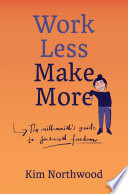

The foundation of achieving more with less effort begins with the right mindset. The author emphasizes that a shift from a traditional work-centric mentality to a results-oriented approach is crucial. This involves recognizing that time is not the ultimate currency; rather, value and results are. By adopting a mindset that prioritizes efficiency and effectiveness over mere busyness, individuals can unlock their potential to achieve significant results without the burden of long hours. This shift encourages readers to focus on high-impact activities that drive progress, rather than getting bogged down in tasks that provide little return on investment. The book suggests techniques for cultivating this mindset, such as visualization, goal-setting, and surrounding oneself with like-minded individuals who support this philosophy.
Continue readingIn today's digital age, technology plays a pivotal role in maximizing productivity. The book highlights various tools and platforms that can automate mundane tasks, streamline workflows, and enhance communication. By leveraging technology, individuals can free up time to focus on strategic activities that contribute to their goals. The author provides insights into selecting the right tools for different tasks, managing digital distractions, and using technology to foster collaboration. This idea underscores the importance of being tech-savvy and adaptable, encouraging readers to embrace innovations that can lead to greater efficiency and effectiveness in their work.
Continue readingOne of the core principles of working less and making more is the art of prioritization. The book introduces frameworks for identifying high-value tasks and eliminating low-impact activities. This involves assessing the potential impact of each task on overall goals and focusing energy on the most significant projects. The author discusses techniques such as the Eisenhower Matrix and the Pareto Principle (80/20 rule) to help readers discern what truly matters. By honing in on these priorities, individuals can allocate their time and resources more wisely, leading to higher productivity and reduced stress levels.
Continue readingTo sustain productivity and effectiveness, the book advocates for the establishment of robust systems and processes. The author explains how creating repeatable workflows can minimize decision fatigue and streamline operations. By documenting procedures and automating repetitive tasks, individuals and businesses can operate more smoothly and efficiently. This idea emphasizes the importance of continuous improvement and iteration, encouraging readers to regularly evaluate and refine their systems to adapt to changing circumstances and enhance performance.
Continue readingA significant theme in the book is the power of outsourcing and delegation. The author argues that many tasks can be handled by others, freeing up valuable time for individuals to focus on their strengths and core responsibilities. The book provides strategies for identifying tasks that can be delegated, selecting the right people for those tasks, and effectively managing outsourced work. This approach not only increases productivity but also encourages collaboration and skill development within teams. By embracing a mindset of delegation, readers can learn to let go of control and trust others to contribute to their success.
Continue readingContrary to the hustle culture, the book emphasizes the importance of rest and recovery in achieving long-term success. The author argues that overworking leads to burnout and decreased productivity. By incorporating regular breaks, downtime, and self-care into their routines, individuals can recharge and return to their work with renewed energy and focus. This idea challenges conventional beliefs about productivity and encourages readers to prioritize their well-being as a crucial component of sustained success. The book offers practical tips for integrating rest into daily schedules and recognizing the signs of burnout.
Continue readingThe final key idea revolves around the necessity of continuous learning and adaptability in a rapidly changing world. The author stresses that to remain competitive and effective, individuals must commit to lifelong learning and be open to new ideas and approaches. This involves seeking out new knowledge, skills, and experiences that can enhance one's capabilities. The book discusses various methods for fostering a growth mindset, such as attending workshops, networking, and seeking feedback. By embracing change and being willing to adapt, readers can position themselves for ongoing success in their personal and professional lives.
Continue reading